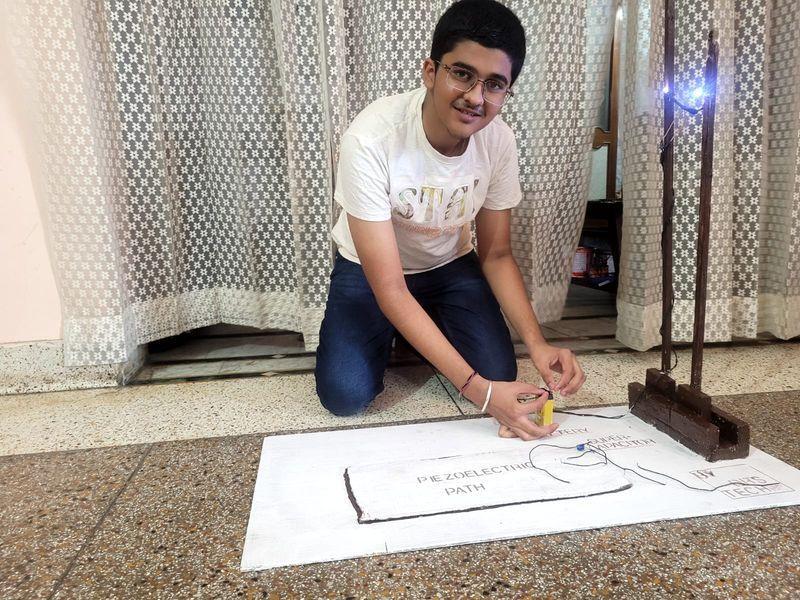
Hoshiarpur Student Builds Device to Generate Power from Footsteps
In a remarkable display of innovation and resourcefulness, a student from Hoshiarpur, Punjab, has developed a groundbreaking project that could revolutionize the way we think about power generation. Sanchit, a Class 8 student, has created a device that harnesses energy from the simplest of human activities – walking. His project, “Power beneath our feet,” uses piezoelectric technology to convert footsteps into electricity, and it has already caught the attention of local officials, scientists, and enthusiasts alike.
The idea for the project struck Sanchit while he was walking to school one day. He realized that every time he took a step, his footsteps were generating a tiny amount of energy. This led him to wonder if it was possible to harness this energy and use it to power devices or even entire households. After conducting extensive research and experimenting with different materials, Sanchit finally developed a prototype that can convert the kinetic energy generated by footsteps into electrical energy.
The device, which is still in its early stages, consists of a series of piezoelectric sensors that are embedded in a plate or strip. When a person steps on the plate, the sensors detect the movement and generate an electrical charge. This charge can then be stored in a battery or used to power small devices such as calculators, flashlights, or even smartphones.
Sanchit’s project has generated a lot of interest in the scientific community, and it has the potential to make a significant impact on the way we generate power. According to the International Energy Agency, more than 1.2 billion people around the world lack access to electricity, and many more struggle to access reliable and affordable energy. Sanchit’s device could provide a sustainable and innovative solution to these energy challenges.
The piezoelectric sensors used in Sanchit’s device are a key component of the technology. These sensors are made from a variety of materials, including crystals, ceramics, and polymers, and they have the ability to generate an electric charge when subjected to mechanical stress, such as pressure or vibration. The sensors are highly sensitive and can detect even the slightest movement, making them ideal for applications such as wearable technology, medical devices, and energy harvesting.
Sanchit’s project is not just a novel idea, but it also has practical applications. For example, the device could be used to power small medical devices, such as pacemakers or insulin pumps, which are currently dependent on batteries that need to be replaced regularly. It could also be used to power sensors and monitoring systems in remote or hard-to-reach areas, where access to electricity is limited.
The significance of Sanchit’s project extends beyond the technical aspects of the device itself. It also highlights the importance of encouraging innovation and entrepreneurship among young people, particularly in the field of science and technology. By providing opportunities for students to develop their skills and pursue their passions, we can inspire the next generation of innovators and entrepreneurs who will drive progress and improve our lives.
Sanchit’s project is a testament to the power of innovation and the potential for young people to make a difference. As we look to the future, it is essential that we continue to support and encourage young innovators like Sanchit, who are pushing the boundaries of what is possible and creating solutions to some of the world’s most pressing challenges.






